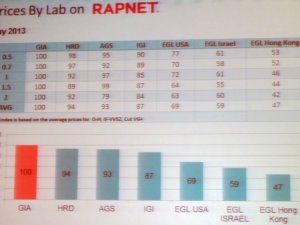- Joined
- May 3, 2001
- Messages
- 7,516
proto|1428508315|3858596 said:"You are making the assumption, erroneous in my opinion, that regular retailers all know that EGL is bogus. The sad thing, is that many have no clue."
oh my god.
okay this makes sense then and I can see how this acts as an incentive.
again. oh my god.
Thank you for the chuckle! If you think you are shocked, you should listen to some of us retailers when we tell each other stories about how uneducated some jewelers are. It is definitely worth an OMG or three.
Of course, we tell these stories while we are at educational events and meetings with other like minded jewelers who share the believe that, "If you think education is expensive, TRY IGNORANCE!"
There are, as I said, many great jewelers who get their GG's and go for continuing education each and every year, and there are those who got their GG thirty years ago and have never cracked a book since, and sadly, those who call themselves jewelers and never get any professional training.
Wink




300x240.png)